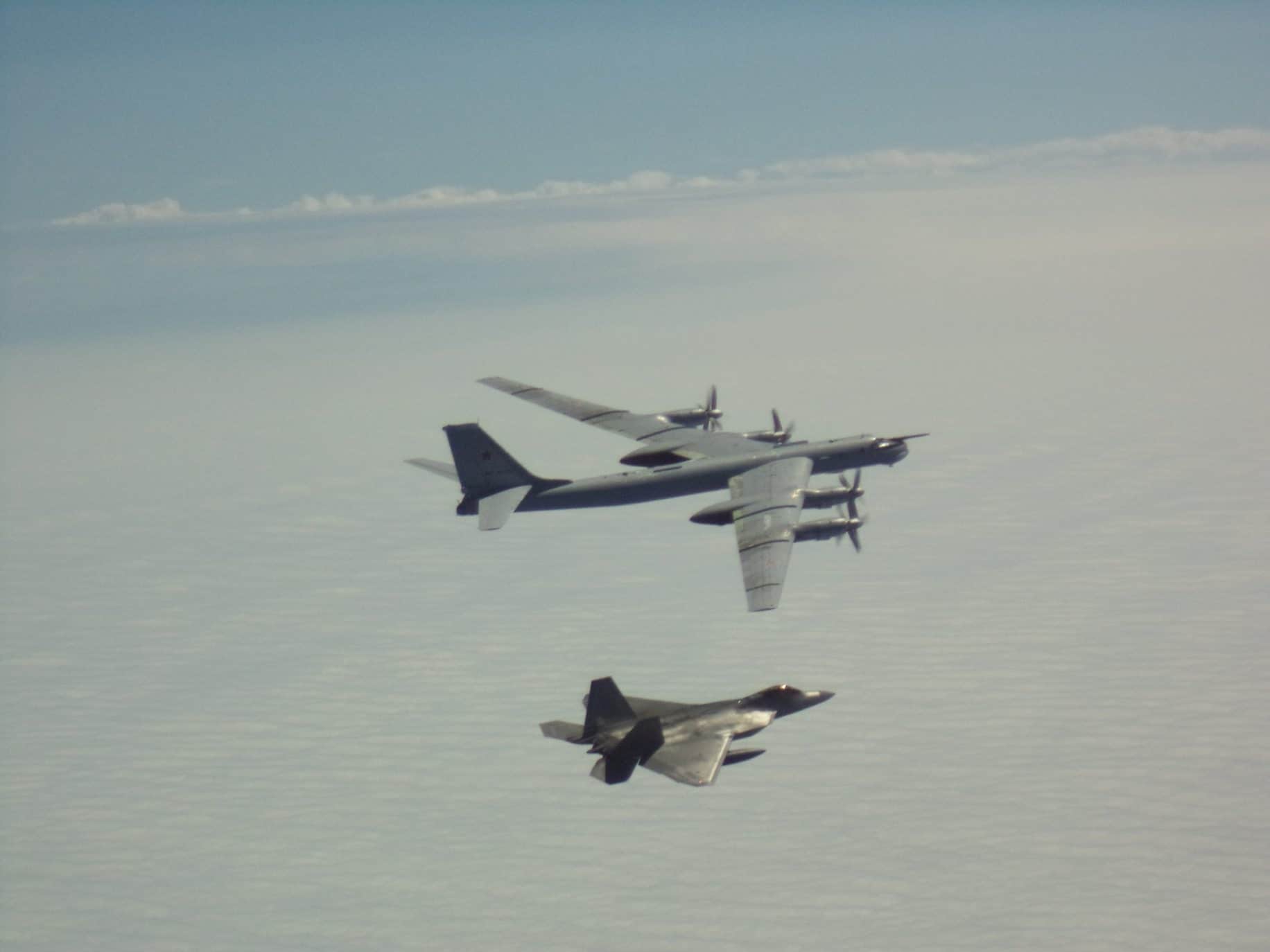U.S. F-22 Raptor fighter jets intercepted two Russian bomber formations, comprised of Russian Tu-95 bombers, Su-35 fighter jets, and A-50 airborne early warning and control aircraft, just 30 miles from Alaska.
The Russian Defense Ministry posted a video of their bombers taking off and later being intercepted.
The North American Aerospace Defense Command (NORAD) confirmed it intercepted the Russian aircraft early Wednesday morning in a series of tweets.
“North American Aerospace Defense Command F-22 Raptors, supported by KC-135 Stratotankers and E-3 Airborne Warning and Control System, completed two intercepts of Russian Bomber formations entering the Alaskan Air Defense Identification Zone early this morning,” NORAD tweeted.
North American Aerospace Defense Command F-22 Raptors, supported by KC-135 Stratotankers and E-3 Airborne Warning and Control System, completed two intercepts of Russian Bomber formations entering the Alaskan Air Defense Identification Zone early this morning.
— North American Aerospace Defense Command (@NORADCommand) June 10, 2020
The first intercepted Russian bomber formation consisted of two Tu-95 bombers, two Su-35 fighter jets and a single A-50 airborne early warning aircraft. The NORAD fighter jets diverted the first formation within 20 nautical miles of the Alaskan shoreline.

NORAD intercepts Russian bombers in the Alaskan Air Defense Identification Zone on June 10th, 2020. (NORAD/Released)
Later on Wednesday morning, NORAD fighters intercepted a second Russian bomber formation, consisting of two more Tu-95 bombers and another A-50 aircraft. The second formation was diverted within 32 nautical miles of the Alaskan shoreline.

NORAD intercepts Russian bombers in the Alaskan Air Defense Identification Zone on June 10th, 2020. (NORAD/Released)
“Intercepting multiple Russian aircraft demonstrates NORAD forces’ readiness and capability to defend the homelands 24 hours a day, 7 days a week, 365 days a year,” NORAD Commander Air Force Gen. Terrence J. O’Shaughnessy said of the intercepts. “Flying air patrols protects the approaches to our nations and sends a clear message we continue executing our homeland defense missions with the same capability and capacity we always bring to the fight.”
“Flying air patrols protects the approaches to our nations and sends a clear message we continue executing our homeland defense missions with the same capability and capacity we always bring to the fight.”
— North American Aerospace Defense Command (@NORADCommand) June 10, 2020
NORAD F-22 fighter jets previously intercepted Russian IL-38 spy planes in April. Those aircraft were diverted in the Bering Sea, near the Aleutian Islands.
In March, NORAD F-22s intercepted another two Russian Tu-142 spy planes near Alaska. The NORAD fighters disrupted the Russian planes as they flew over a U.S. Navy submarine exercise in progress.
Following the March and April intercepts, O’Shaughnessy indicated he believes the Russian aircraft are testing the U.S. defenses for vulnerabilities.
“What we do see is, I think, a continuous effort for them,” he said in a Pentagon press briefing. “It’s a continued effort on multiple fronts to potentially test for any vulnerabilities.
This article has been updated to correct NORAD’s full name.



